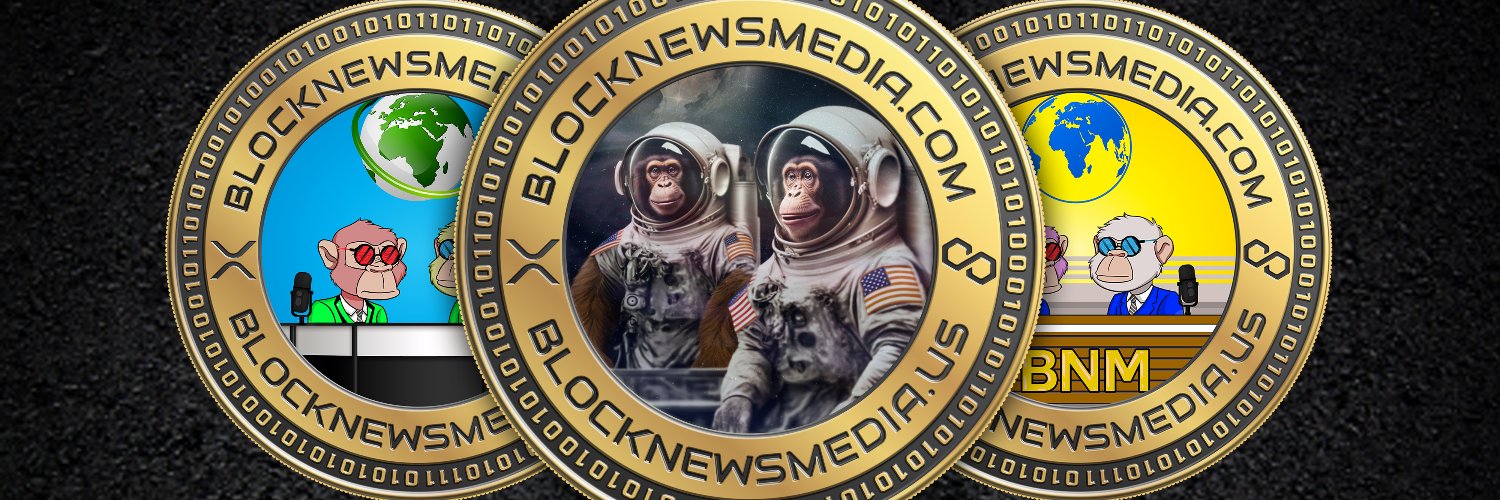DeFi
VanEck-Backed Superform Launches DeFi Product for ‘Intelligent’ USDC Yield
Published
4 months agoon
By
admin

Crypto yield marketplace Superform announced Wednesday the launch of SuperUSDC, a product billed as a “set and forget” opportunity for earning high yield on Circle’s stablecoin.
Since its launch in early access this year, the platform has functioned as a decentralized marketplace for yield protocols. Projects can list vaults on Superform, which are linked to yield opportunities on Ethereum as well as dedicated scaling solutions like Arbitrum or Base.
SuperUSDC offers DeFi users “automated, non-custodial yield management” and is the first offering in Superform’s line of SuperVault products, according to a statement.
Superform Labs co-founder and CEO Vikram Arun told Decrypt that the move comes after over 100,000 digital wallets interacted with the platform, providing critical feedback.
“SuperVaults is what we created in response to what was the most in-demand feature from users,” Arun said.
Arun explained that SuperVault automatically allocates digital assets to create opportunities, utilizing an algorithm optimized on the platform’s data. He mentioned that with 768 vaults currently on Superform, the product was designed in response to user requests for a more “curated” selection.
Alongside SuperVault’s release, Superform Labs announced that it had raised $3 million in a strategic funding round led by VanEck Ventures. It represented the $30 million fund’s first investment since the global asset manager unveiled the initiative in October.
While Superform isn’t available to U.S. residents, there is bipartisan hope that lawmakers will soon pass a federal framework for stablecoins. With regulatory shifts under the President-elect expected to bolster DeFi too, Arun said that providing an influx with stablecoins with the best possible source of yield could become the next “gold rush on-chain.”
“Our thesis is that we’re going to see incredible stablecoin growth,” Arun said. “The new chain wars will be fought around providing the most utility for stablecoins as possible.”
Stablecoins are digital assets pegged to the price of a fiat currency, such as the U.S. dollar. Often backed 1:1 by assets like cash and U.S. Treasuries, stablecoins have found increasing use as a form of payment and collateral on DeFi platforms. In 2022, Securities and Exchange Commission Chair Gary Gensler described stablecoins’ use in DeFi as akin to “poker chips.”
This year, stablecoins have already seen significant growth. Their total market cap has grown to $200 billion from $130 billion since January, according to DefiLlama. Among all stablecoins, Tether’s $139 billion footprint for USDT looms largest, followed by Circle’s USDC at $41 billion.
Circle Ventures participated in Superform’s $6.5 million Seed funding round in November 2022, which was led by Polychain Capital and saw participation from BitMEX co-founder Arthur Hayes. Arun said the stablecoin issuer became one of Superform’s largest investors then, putting its weight behind the startup as the crypto market recoiled from the collapse of FTX.
After the $40 billion downfall of UST and LUNA, as well as crypto lenders in 2022, Arun noted that some users might be cautious about projects promising high returns on stablecoins. Nonetheless, he remained optimistic that Superform’s connection with Circle could shift this perception.
“We’ve been burned so many times by stablecoins and yield-bearing products that aren’t managed properly,” he said. “I think it’s really important for us to align with good actors and build products that anybody can verify on-chain and don’t create additional trust assumptions.”
Edited by Sebastian Sinclair
Daily Debrief Newsletter
Start every day with the top news stories right now, plus original features, a podcast, videos and more.
Source link
You may like


Trump’s Crypto Dealings Are Making Regulation ‘More Complicated’: House Financial Services Chair


Pontus-X taps Oasis for private, cross-border data sharing in E.U.


Elon Musk, Dogecoin Proponent and U.S. Agency Figurehead, Says ‘No DOGE in D.O.G.E.’
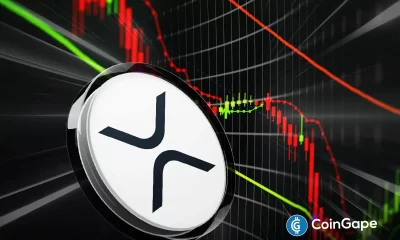

Crypto Investor’s Brave Yet Hilarious Prediction Speculates If XRP Price Will Hit $3,000 This Cycle


Dogecoin (DOGE) Bulls In Trouble—Can They Prevent a Drop Below $0.15?


California introduces ’Bitcoin rights’ in amended digital assets bill
Bitcoin
BTCFi: From passive asset to financial powerhouse?
Published
1 day agoon
March 30, 2025By
admin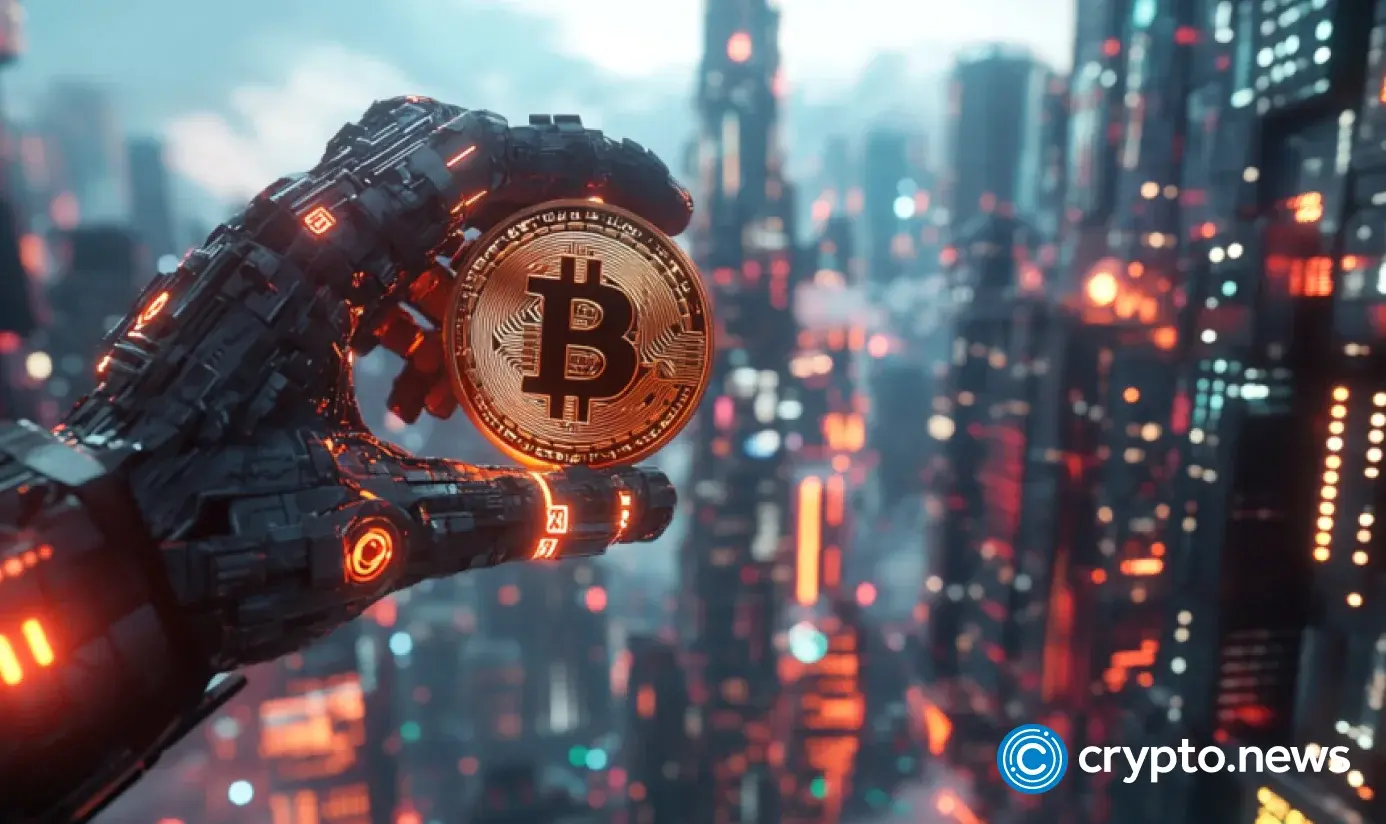
Disclosure: The views and opinions expressed here belong solely to the author and do not represent the views and opinions of crypto.news’ editorial.
Bitcoin (BTC) has always been the face of crypto, the first thing that comes to mind when you think of this market. But for years, its role has been largely static—held as a store of value, yet rarely used for anything else. Then BTCFi entered the scene: unlike traditional DeFi, which has been dominated by Ethereum (ETH) and other smart contract platforms, BTCFi is built around Bitcoin as the core asset.
In the last quarter of 2024, BTCFi’s total value saw a massive surge—from $800 million all the way to $6.5 billion. The momentum is impressive, to say the least. More institutional players are taking notice, and analysts predict that by 2030, roughly 2.3% of Bitcoin’s circulating supply (about $47 billion) could be actively used in decentralized finance.
So clearly, BTCFi is not just a passing trend. But why is it gaining so much traction? Can it really be called the future of Bitcoin’s utility as a financial asset?
Let’s try to figure it out.
What is BTCFi, and why is it growing now?
BTCFi represents the intersection of Bitcoin and decentralized finance, with the first crypto playing the role of the core asset in this case. Typically, DeFi platforms have been built on blockchains like Ethereum, while Bitcoin holders had to wrap their BTC into ERC-20 tokens (like wBTC) to participate in this field.
This kind of tokenization started picking up the pace around 2020, allowing BTC holders to access DeFi services that are typically not available on the Bitcoin blockchain. These “wrapped” tokens are built in a way that makes them compatible with other blockchain networks. And so, they effectively extended Bitcoin’s functionality.
However, advancements in Bitcoin L2 solutions and LRTs, or layered rollup technologies, are now changing the rules. It is becoming unnecessary for Bitcoin to use “second class citizen” ERC-20 tokens anymore.
BTC LRTs, for example, operate on Ethereum and other chains as well, but use Bitcoin as the primary collateral in transactions. This means unlocking the use of Bitcoin as a yield-generating asset in other networks beyond its native chain.
The emerging Bitcoin L2s, meanwhile, are tackling this blockchain’s long-standing scalability issues, allowing for faster and more cost-efficient transactions. These innovations are going to fundamentally redefine Bitcoin, turning it from a passive store of value to an actively utilized financial asset.
Why is BTCFi the gateway for Bitcoin whales in 2025?
Large Bitcoin holders—miners, in particular—have often used CeFi loans backed by their BTCs to fund their operations since they didn’t want to outright sell those assets. This practice is still going on today, but BTCFi promises to make some changes. And that’s where everything will start from, really: by BTCFi enabling new opportunities for Bitcoin holders to put their assets to work.
Soon enough, Bitcoin whales will start looking at BTCFi as a powerful gateway that can be used to enter the DeFi space. And the way I see it, there are two key factors in 2025 that will influence that perception.
The first is the rise of Bitcoin ETFs. BTC ETFs currently account for almost 6% of all Bitcoin supply, having crossed $100 billion in holdings at the beginning of 2025. With them gaining mainstream traction, Bitcoin is increasingly perceived as the safest and most stable cryptocurrency asset.
This makes it a prime choice for DeFi, attracting large-scale holders who want to use their BTC without selling. Earlier in February this year, Goldman Sachs announced that it had invested $1.63 billion in Bitcoin ETFs. That’s easy proof right there.
The second major factor is the appearance of BTC L2 technologies, which we’ve already covered earlier. Until recently, the lack of scalability and transaction efficiency held Bitcoin back from DeFi adoption. Now, we are going to see a surge of L2 solutions that will enhance the network’s performance. And here’s the important part: they will do so while preserving Bitcoin’s core principles of decentralization and simplicity (and, hence, its robustness).
What DeFi platforms need to do for proper BTCFi integration
There are several challenges that will need to be overcome before BTCFi can achieve truly seamless integration. The biggest technical issue will be ensuring that Bitcoin-based L2 solutions become genuinely trustless. At the present time, they are not quite there, often relying on intermediaries and centralized elements, which goes against Bitcoin’s core philosophy.
The good news is that there’s a lot of R&D going on to make it happen. If successful, it could make the vast amounts of BTCs that are currently just lying there “collecting dust” be useful in DeFi.
Another big challenge is going to stem from people’s trust. Among Bitcoin holders, there are many who do not quite trust Ethereum and the existing Bitcoin tokenization methods. The key to winning them over will lie in creating robust and cost-effective solutions on the native Bitcoin network. Having a fully trustless and inexpensive execution layer on the BTC blockchain could really become the dealbreaker for these people.
The future of Bitcoin: More than just ‘digital gold’
For years, Bitcoin has been carrying the moniker of “digital gold”—a safe-haven asset meant for holding rather than using. These days, this is becoming increasingly untrue. As more institutional players enter the crypto space, the potential for BTCFi to become Bitcoin’s next-level evolution is very real.
The demand is on the rise, and the infrastructure is already being built. For Bitcoin whales looking to maximize their assets without selling, BTCFi could become the perfect answer.
Disclosure: This article does not represent investment advice. The content and materials featured on this page are for educational purposes only.

Michael Egorov
Michael Egorov is a physicist, entrepreneur, and crypto maximalist who stood at the origins of DeFi creation. He is a founder of Curve Finance, a decentralized exchange designed for efficient and low-slippage trading of stablecoins. Since the inception of Curve Finance in 2020, Michael has developed all his solutions and products independently. His extensive scientific experience in physics, software engineering, and cryptography aids him in product creation. Today, Curve Finance is one of the top three DeFi exchanges regarding the total volume of funds locked in smart contracts.
Source link
cryptocurrency
Crypto scammers nabbed in India for $700k fraud posing as a Japanese exchange
Published
5 days agoon
March 27, 2025By
admin

Law enforcement in India has arrested five suspects who allegedly duped a businessman out of roughly $700,000 via a fake cryptocurrency trading platform.
According to local media, the five suspects, including one woman, were taken into custody following an investigation by the cybercrime wing of Odisha’s Crime Branch.
The accused reportedly ran a scam using a bogus trading app called ZAIF, where they promised massive returns of up to 200% on digital currency investments. The trading platform was promoted as being based in Japan.
It’s worth noting that ZAIF is the name of a legitimate Japanese cryptocurrency exchange, which suffered a $60 million hack in 2022. However, the platform used in this scam is likely unaffiliated and merely borrowed the name to appear credible.
The fraud kicked off when the victim, an Indian businessman, was contacted on Facebook by a woman claiming to be a Hong Kong-based IBM software developer.
She gained his trust and convinced him to invest in crypto via ZAIF. Over a month, he transferred more than INR 6 crore (approximately $$699,352) across various accounts controlled by the scammers.
As is common in such crypto trading scams, the victim was initially shown fake profits on the platform to build trust. However, when the victim attempted to withdraw gains, the platform demanded an additional INR 89 lakh to unlock the funds — a tactic commonly referred to as an advance fee fraud.
Once the victim refused, the scammers vanished, cutting off contact.
Police tracked down the suspects through digital trails and banking records. Authorities seized phones, SIM cards, ID documents, and other incriminating materials during a raid.
With cryptocurrencies still operating in a grey area, India remains a hotspot for scams and fraud targeting unsuspecting users. Earlier this month, police cracked down on a similar scam that promoted a fake token called RSN and promised 2% daily returns. Losses were estimated to be between $1.14 and $2.29 million.
Source link
DeFi
Solana DEX Raydium’s Pump.fun Alternative Is Going Live ‘Within a Week’
Published
5 days agoon
March 26, 2025By
admin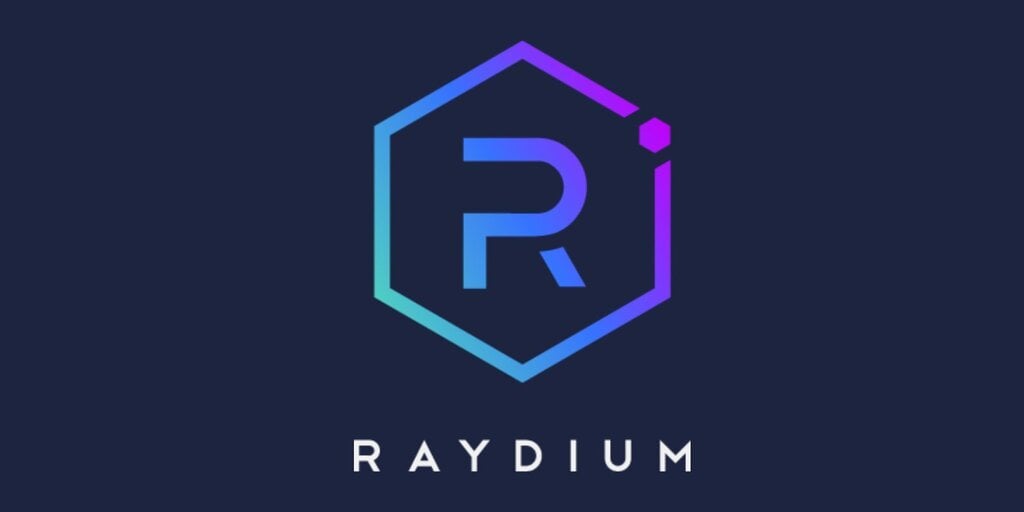
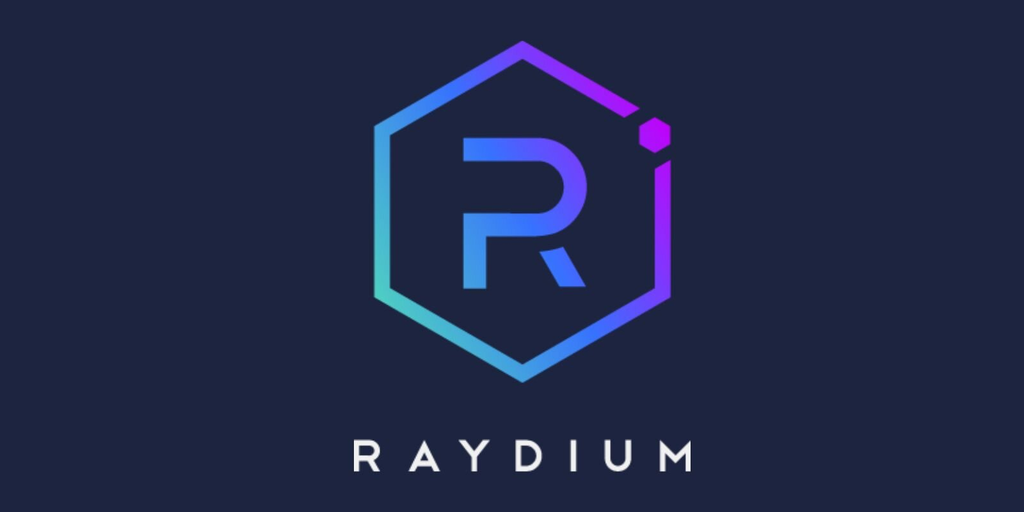
Solana decentralized exchange Raydium says it’s going live in the next week with its “flexible” token launchpad, which will address what have become user pain points on its soon-to-be competitor Pump.fun.
The new platform, LaunchLab, will allow users to adjust a token’s bonding curve and tokenomics, while still offering a user-friendly cookie cutter option.
Previously, Raydium had simply operated as an automated market maker and decentralized exchange on Solana; while Pump.fun rapidly grew to become the most popular token launchpad due to its quick and easy experience.
When tokens reached a certain market cap on Pump.fun, they used to “graduate” to Raydium. Doing so allowed for tokens to be more freely and widely traded. However, last week, Pump.fun split off from Raydium and began graduating tokens to PumpSwap, its own decentralized exchange.
Tom, the pseudonymous team lead at Raydium, told Decrypt that he had a “gut feeling” Pump.fun was going to make a move like this and had been preparing for it for “a couple of months,” by creating a rival launchpad in LaunchLab.
“The program that we have right now offers a lot of flexibility for token creators,” Tom explained. “The vast majority of asset issuance in the future is going to happen on Solana, and we want Raydium to play a central role in that.”
LaunchLab is set to offer a wide range of parameters that users can adjust for their token launch. These include the total token supply, vesting schedules, which liquidity pool to utilize, as well as various ways to manipulate the “bonding curve”—which is used to generate liquidity for a token before it launches for wider distribution.
In fact, Raydium is even toying with the idea of being able to manually drag the bonding curve on its X and Y access, in turn impacting several factors relating to the token. Tom says this would display the power of the tool the team is creating, but he is unsure if the feature will ship straight away.
This is a stark difference to Pump.fun which only allows users to make aesthetic changes to tokens, giving everything the same tokenomics and bonding curve. And, in many ways, this simplicity has been to the benefit of the platform as traders know exactly what they’re getting into when buying a Pump.fun token.
However, Raydium thinks it’s time to evolve.
“We’ve talked to hundreds of teams this year, especially on the AI token side, where they initially launched their token on Pump.fun, and then they realized they didn’t have the amount of funding that they needed to deliver on their goals,” Tom explained. “So I think that people will view the optionality of [LaunchLab] as being a net benefit, but it might take some time to play out.”
Pump.fun has seen a wave of AI projects either endorse or create a token on the launchpad as a way to fund development. However, a common pain point is the lack of control the team has over the token.
This can result in “tremendous energy” that is “difficult to sustain” due to a lack of capital, Ooli, the creator of AI With Daddy Issues, previously told Decrypt.
Tom said that despite Pump.fun’s surge in popularity, there is still “considerable friction” for projects looking to create bespoke tokens. Over the past year, the Raydium team has been troubleshooting for a number of projects that wanted to launch tokens that didn’t suit Pump.fun’s simplified approach, in part prompting the creation of a more complex launchpad to address this.
Although there is optional flexibility with LaunchLab’s token creation process, it will still aim to provide a retail and user-friendly experience. The user interface itself will “look and feel” similar to Pump.fun and provide a cookie cutter token option—if the user isn’t keen on adjusting its parameters.
“I would like to see teams benefit from the flexibility of the program, I think a couple of strong launches does a lot to really show this,” Tom told Decrypt. “I would like to see users make money and tokens increase in price in a way that is sustainable, [which will] lead to more migrations and trading throughout Solana.”
LaunchLab is set to be part of a broader suite of products by Raydium, with the first tool being the aforementioned token launchpad. Currently, the team is considering which features to go live with and which to hold back. Tom also said Raydium is talking to third parties about implementing LaunchLab into their products, as well as creating a “liquidity bootstrapping” feature somewhat akin to the pre-sale model.
“I think all products have a phase one which is: You get it out there, you throw something at the wall and you see what sticks.” he said. “And if you’re not seeing a lot of stuff stick, you pick it back up, you re-bundle it, and you throw it again.”
Tom told Decrypt that he’s ready to push LaunchLab as early as Wednesday, but is holding back to think through how the product can make the biggest splash. Adding that it will definitely be shipped “within the next week.”
“But I can say that fees will be less and the idea is to have [LaunchLab] be positive long-term for the space,” he added.
Edited by Stacy Elliott.
Daily Debrief Newsletter
Start every day with the top news stories right now, plus original features, a podcast, videos and more.
Source link

Trump’s Crypto Dealings Are Making Regulation ‘More Complicated’: House Financial Services Chair

Pontus-X taps Oasis for private, cross-border data sharing in E.U.

Elon Musk, Dogecoin Proponent and U.S. Agency Figurehead, Says ‘No DOGE in D.O.G.E.’

Crypto Investor’s Brave Yet Hilarious Prediction Speculates If XRP Price Will Hit $3,000 This Cycle

Dogecoin (DOGE) Bulls In Trouble—Can They Prevent a Drop Below $0.15?

California introduces ’Bitcoin rights’ in amended digital assets bill

MELANIA Insider Hayden Davis Selling Millions of Dollars Worth of Memecoin Amid 95% Drop: On-Chain Data

Toulouse starts to accept crypto for public transport

Bitcoin, Crypto Prices Slide as Trade Tensions, Inflation Risks Rattle Markets

Will BlackRock Investors Stay Bullish?

Bitcoin Could Appear on 25% of S&P 500 Balance Sheets by 2030, Analyst Says

Centralization and the dark side of asset tokenization — MEXC exec

Bitcoin Support Thins Below $78,000 As Cost Basis Clusters Shift Toward $95,000

Cryptocurrencies to watch this week: Solana, Cronos, DOT

EU Regulator Pushes for New Capital Rules for European Insurers Holding Crypto Assets

Arthur Hayes, Murad’s Prediction For Meme Coins, AI & DeFi Coins For 2025

Expert Sees Bitcoin Dipping To $50K While Bullish Signs Persist

Aptos Leverages Chainlink To Enhance Scalability and Data Access

Bitcoin Could Rally to $80,000 on the Eve of US Elections

Sonic Now ‘Golden Standard’ of Layer-2s After Scaling Transactions to 16,000+ per Second, Says Andre Cronje

Institutional Investors Go All In on Crypto as 57% Plan to Boost Allocations as Bull Run Heats Up, Sygnum Survey Reveals

Crypto’s Big Trump Gamble Is Risky

Ripple-SEC Case Ends, But These 3 Rivals Could Jump 500x

Has The Bitcoin Price Already Peaked?

A16z-backed Espresso announces mainnet launch of core product

Xmas Altcoin Rally Insights by BNM Agent I

Blockchain groups challenge new broker reporting rule

The Future of Bitcoin: Scaling, Institutional Adoption, and Strategic Reserves with Rich Rines

Trump’s Coin Is About As Revolutionary As OneCoin

Is $200,000 a Realistic Bitcoin Price Target for This Cycle?
Trending

 24/7 Cryptocurrency News5 months ago
24/7 Cryptocurrency News5 months agoArthur Hayes, Murad’s Prediction For Meme Coins, AI & DeFi Coins For 2025

 Bitcoin2 months ago
Bitcoin2 months agoExpert Sees Bitcoin Dipping To $50K While Bullish Signs Persist
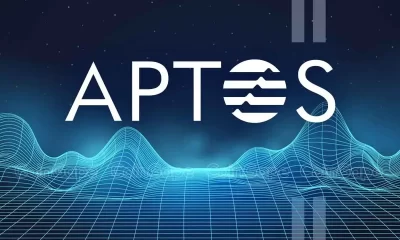
 24/7 Cryptocurrency News3 months ago
24/7 Cryptocurrency News3 months agoAptos Leverages Chainlink To Enhance Scalability and Data Access

 Bitcoin5 months ago
Bitcoin5 months agoBitcoin Could Rally to $80,000 on the Eve of US Elections

 Altcoins2 months ago
Altcoins2 months agoSonic Now ‘Golden Standard’ of Layer-2s After Scaling Transactions to 16,000+ per Second, Says Andre Cronje

 Bitcoin5 months ago
Bitcoin5 months agoInstitutional Investors Go All In on Crypto as 57% Plan to Boost Allocations as Bull Run Heats Up, Sygnum Survey Reveals

 Opinion5 months ago
Opinion5 months agoCrypto’s Big Trump Gamble Is Risky
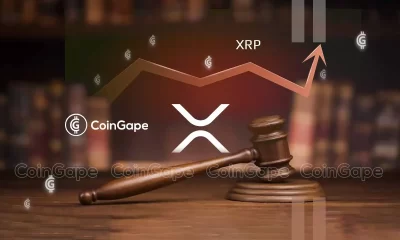
 Price analysis5 months ago
Price analysis5 months agoRipple-SEC Case Ends, But These 3 Rivals Could Jump 500x

